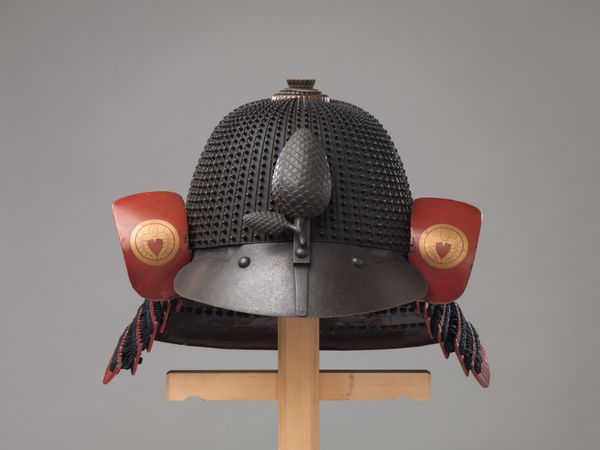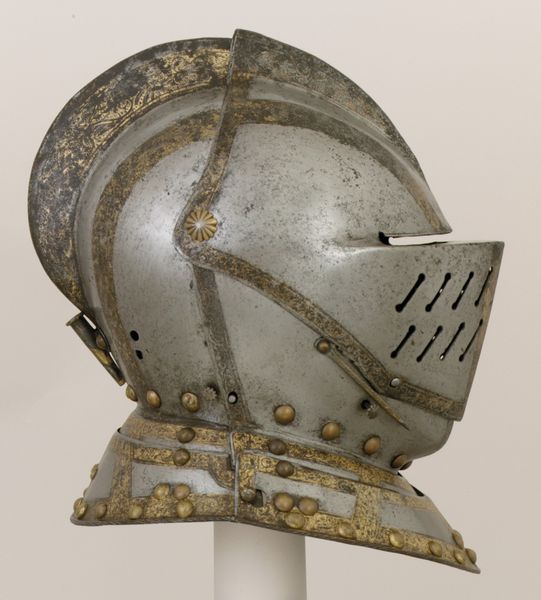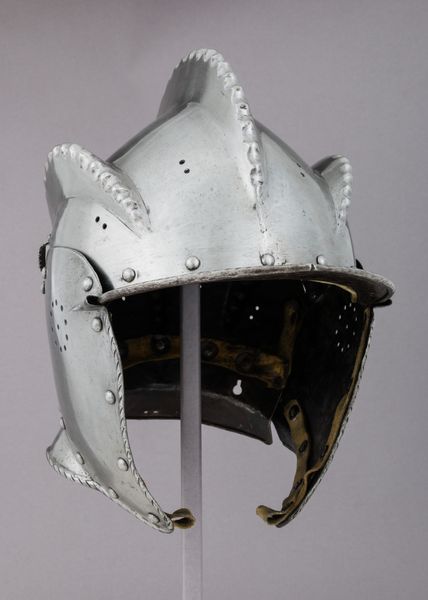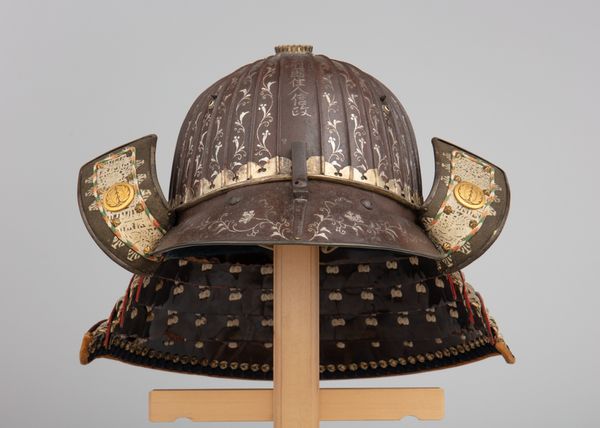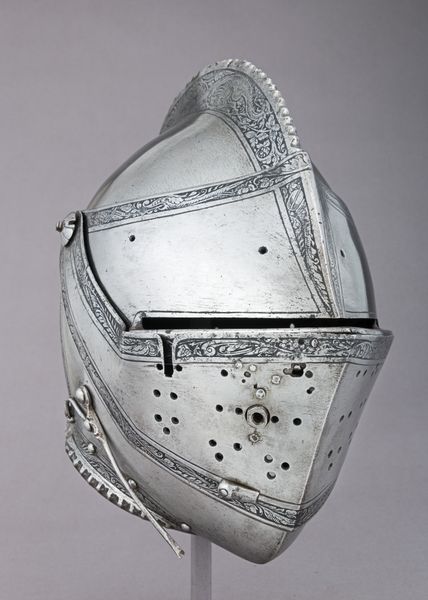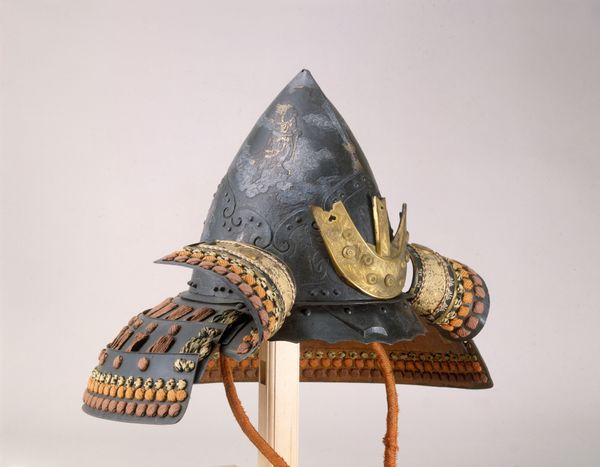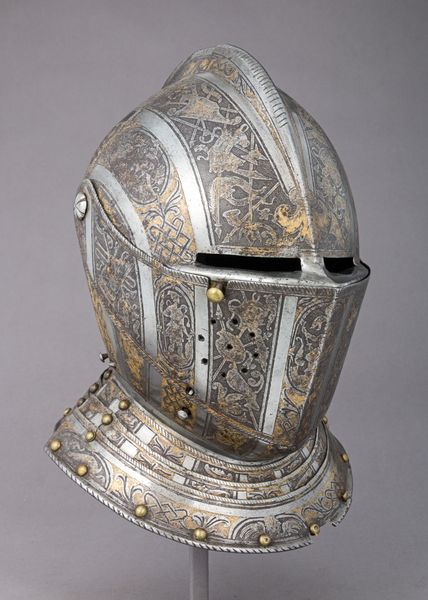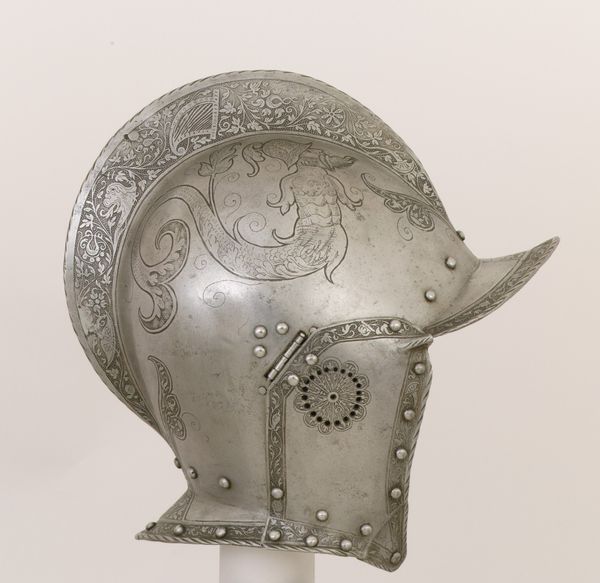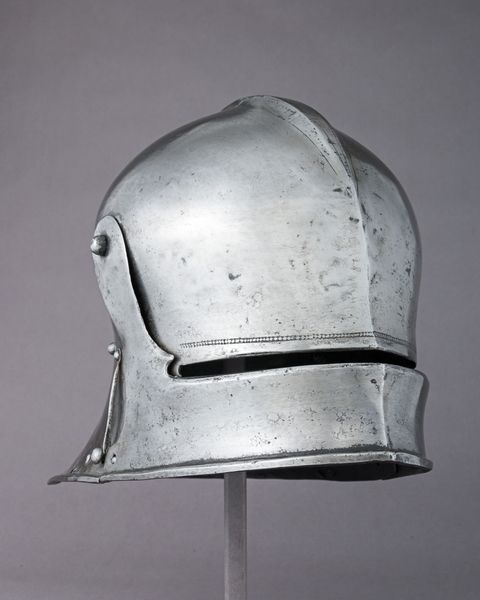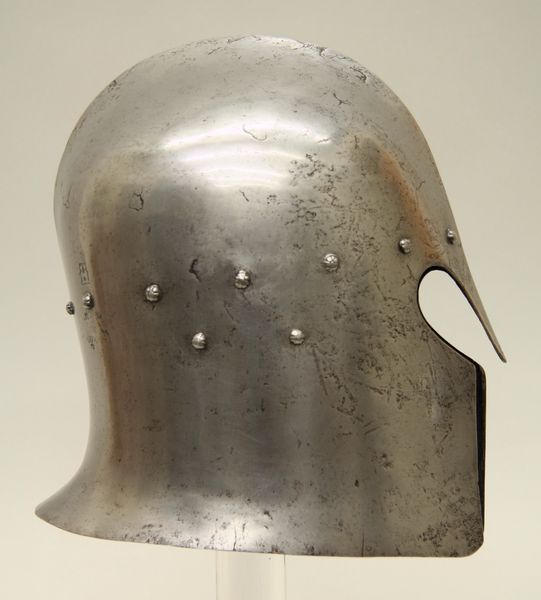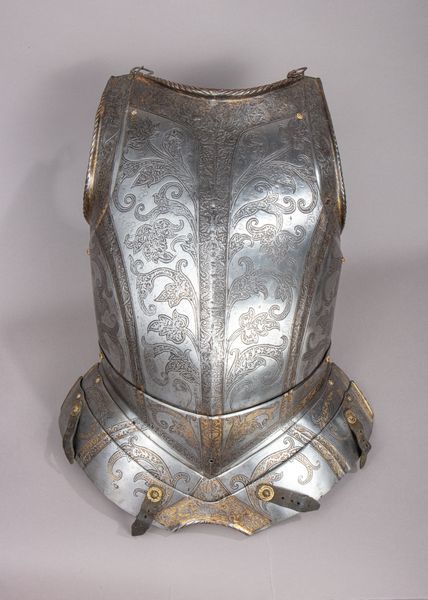
metal, bronze, sculpture
#
medieval
#
metal
#
sculpture
#
asian-art
#
bronze
#
japan
#
sculpture
#
armor
#
decorative-art
Dimensions: H. 11 in. (27.9 cm); L. 15 1/2 in. (39.4 cm)
Copyright: Public Domain
Editor: Standing before us is a Hoshi-Kabuto helmet dating back to the 17th century. It's crafted from metal, bronze, and other materials and resides here at the Metropolitan Museum of Art. It has a rather regal appearance, with all the meticulous detail put into its crafting. What stories do you think this helmet tells, looking at it from a historical perspective? Curator: This helmet offers a fascinating lens through which to view the socio-political landscape of 17th-century Japan. Armour wasn't merely functional; it served as a potent symbol of power, status, and even personal identity. Editor: It does seem very intricately designed. Curator: Indeed. Examining its construction – the individual plates, the elaborate embellishments – we can glean insights into the craftsman's skill and the patron's wealth and status. How might the artistry itself influence perceptions of authority? Editor: That's an interesting question! Perhaps the complexity suggests sophistication and a strong societal structure. The person who wore this was powerful. Curator: Exactly. Now consider the context: Japan in the 17th century was under the Tokugawa shogunate, a period of relative peace but also rigid social hierarchy. Editor: How does this helmet fit into that framework? Curator: A helmet like this probably wouldn’t be accessible to everybody. Think about who might commission or wear such a piece. What does that tell us about the public role of art – even utilitarian objects like armor – in reinforcing social order? Editor: I suppose it reinforces existing power structures by visually representing the status of a noble or warrior. That hadn't occurred to me at first! Curator: Precisely. And remember, museums themselves play a role in shaping our understanding of such objects. Displaying this helmet here, what message do you think the museum intends to convey about Japanese history and culture? Editor: I imagine it seeks to show the artistry and culture in the everyday life of a powerful Japanese person during this period. That’s insightful; I will keep that in mind for future projects. Curator: Excellent! By analyzing art within its social and institutional context, we gain a much richer understanding.
Comments
No comments
Be the first to comment and join the conversation on the ultimate creative platform.
